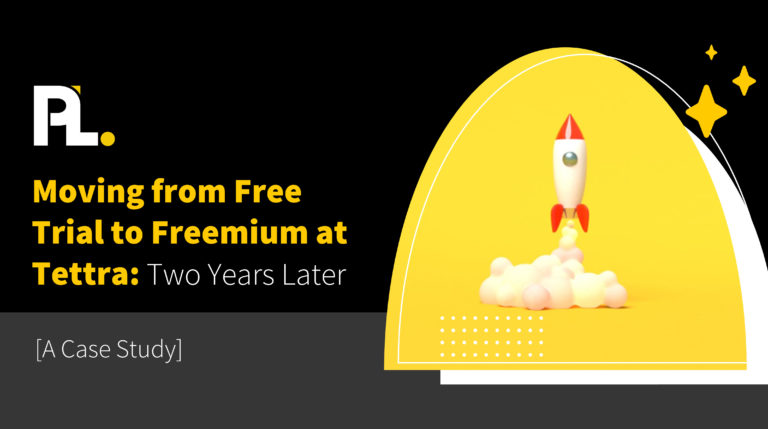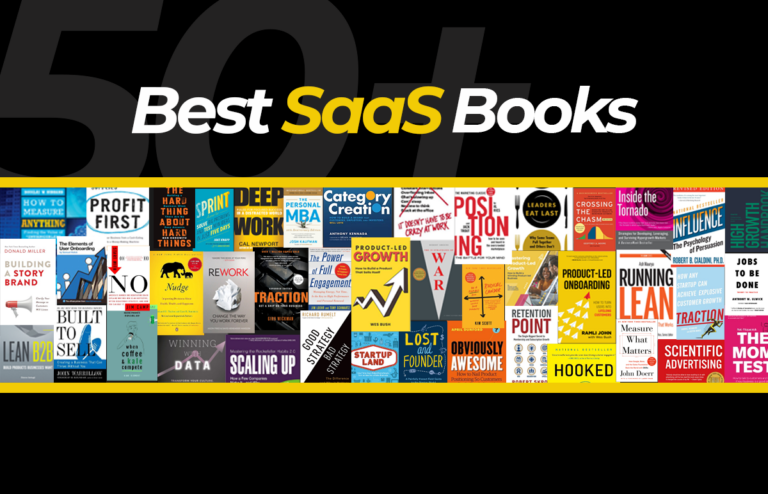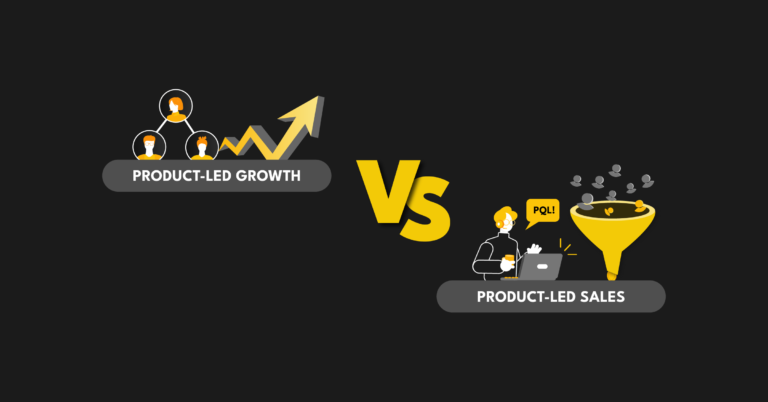I’ve been in tech sales for nearly a decade, selling everything from nine-month sales cycles to enterprise to high-velocity, one-call closes. I’ve observed one constant throughout – customers want to experience a product’s value on their own before talking to a salesperson.
That’s why I started exploring product-led sales at one of my previous companies.
Here’s how it worked.
The sales environment was exactly what you think of when you hear traditional enterprise sales: high friction, confusing fees, long implementation processes, etc.
Basically, a user would sign up, start playing around with the tool, try to ask a question, and book a call. A salesperson then reaches out, runs a typical discovery call: shows a fancy pitch deck, demos the product for three minutes, and probably never answers the question the user had when they booked the conversation in the first place.
My job was to find a balance between the enterprise sales motion (discussed above) with one more aligned with a sales-assist motion.
This means you’re shifting the goal from long-term commitments to deeper customer value and a better understanding of the product.
Why We Chose Product-Led Growth
I chose the product-led growth go-to-market (GTM) strategy because our business model and customer journey have a very low time-and-effort-to-value, and we advertise primarily to end-users.
It’s very important to note that had our product not met these conditions, selecting product-led growth would have been really dangerous.
On top of that, our whole company seemed to be singularly focused on driving signups. So we aligned on converting these signups into product advocates and ultimately paying customers.
Our Main Goal
Build a case for a product-led sales motion and validate that it could be a new sales channel for our GTM.
Deliverables included:
- Increasing the number of leads.
- Closed-won opportunities for sales.
While I had tremendous support from my team, I was the point person for building this out.
Keep in mind that my main job was an Enterprise AE. This product-led project was an added responsibility; in hindsight, it was a mistake to try to do both. If I were doing this again, I’d find a team of people who are singularly focused on building this out.
The Framework
It’s easy to get overwhelmed when thinking through what to measure and how to track your product-led growth progress. I started with what I thought were the most barebones metrics (signups and what actions lead to higher activation trends) and started to look at those on a week/week basis. Once we had that, it was about sharing the progress with anyone who would listen.
Here’s an overview of each step:
- Look at signups and traffic
- Signup trends
- Report signups and usage to leadership.
- Share customer stories with the greater organization
Step One: Look at Signups and Traffic
Turns out this is way harder than it sounds!
Once you start getting thousands of monthly signups and website visitors, you need to have the ability to identify who those people are very quickly, while constantly monitoring users to ensure no great leads go missed.
If you’re doing this manually, watch out for trying to collect too much information all at once. Pick your metrics carefully, test whether or not they lead to activation inflection points, and then move on to the next metric.
I spread myself too thin early on and tried to look at everything at once, and I couldn’t see the forest through the trees.
What I looked for in this data:
- Ideal Customer Profile fit (ICP)
- Company fit: industry, location, company size, revenue
- Product usage data: meaningful events like signups, invites, and downloads
- North Star or “Aha!” Moments
Full disclosure: my process was incredibly manual, but that’s fine when you prove things out! The goal here was to demonstrate to the leadership our freemium & self-serve user base were golden opportunities for sales.
Step Two: Signup Trends
Once I found some interesting users that fit the framework above (ICP, company fit, usage, etc.), I then created a list (or cohort) to see how their usage trended over various periods (this is commonly referred to as cohort analysis).
I was looking to find these signups:
- Returning users: how many signups from last week came back, how frequently, etc.?
- Taking specific actions inside the app: who was inviting more users to the platform, sharing, and spending long periods on the platform?
- Engaging with specific pages on our website: this included pages like pricing, security, premium functionality, etc.
Step Three: Report Signups to Leadership
The next step was to aggregate the data and share a table like the one below with the VP of Sales, VP of Account Management, Growth, CEO, and CPO.
| Name | Active Users | New users | Most active user | Invites | Shares (product specific) |
|---|---|---|---|---|---|
| Hooli | 25 ⬆️ | 5 | Gavin@hooli.com | 3 | 10 |
| PiedPiper | 10 ⬆️ | 4 | Richard@piedpiper.com | 5 | 10 |
| Soylent | 55 ⬇️ | 1 | Frank@soylant.com | 3 | 0 |
| Bluth Company | 40 ⬇️ | 0 | Michael@bluth.com | 1 | 0 |
You can always add more columns of data that might be interesting, like:
- Intent data: what pages on your website are they looking at (security, pricing, demo request)?
- Support interactions: number of tickets submitted, who is asking the most questions within an org, etc.
- Whatever is unique and specific to your business that leads to your customer getting more value.
- You might have your own unique product events in these columns. “Shares” is an example.
What to expect when talking with different departments:
- Sales leaders: care about uncovering pipeline.
- # of opps created
- # of opps created
- Account Management: focus on preventing churn
- # of opportunities created
- Churn rate (enterprise + self-serve + free)
- CEO & CPO: interest in all aspects but primarily the holistic customer journey. Where are users getting stuck, falling out of the funnel, etc.? Also, they’re very concerned about protecting users from spam and over-outreach by sales.
- Marketing:
- # of opportunities created
- Average Sales Price (ASP) of opportunity
- Customer Acquisition Cost (CAC)
Step Four: Share Customer Stories With the Greater Organization
One of the most important elements of any new initiative is to communicate both the wins and losses.
When a well-known brand came on board, I made sure to highlight that in our company. At the same time, if we saw that very same logo stop using the platform and churn, it’s important to share that too.
The key here is consistency. Just share. Share as often and as loudly as you can! Remember that your leadership is aware of product-led growth and product-led sales and it’s your job to keep them informed about what is happening with your signups.
Wrapping up
Through this process, I learned to:
- Be scrappy and do things manually at first to make the business case to get company buy-in. This won’t scale long-term but it’s enough to get things started.
- Create a sustainable process, so you don’t kill yourself in the process. It was important for me to communicate what I wanted to do but couldn’t due to bandwidth.
- Don’t work in a silo, bring in more departments.
Along with that, the CEO became a believer in product-led growth.
Moving to this sales-assist motion wasn’t easy, and there were challenges along the way, but this framework helped validate that we could become a product-led organization.












